Traumatic Brain Injury (TBI)
 The recent tragedy in Arizona brings into focus the massive problems that can exist for someone with a brain-related injury or illness and for their family. After suffering a brain injury extensive treatment and rehabilitation is often required. Brain-based problems is one of the “silent epidemics” in our country.
The recent tragedy in Arizona brings into focus the massive problems that can exist for someone with a brain-related injury or illness and for their family. After suffering a brain injury extensive treatment and rehabilitation is often required. Brain-based problems is one of the “silent epidemics” in our country.
Traumatic brain injury and other neurological disorders are epidemic:
- There are 1.4 million Americans who sustain a new TBI every year.
- There are 3.2 million living with severe impairments from TBI. This number is increasing.
- There are over 800,000 strokes per year in the US.
- In 2002 four million patients were suffering from Alzheimer’s alone (CMS).
- Multiple Sclerosis (MS), Parkinson’s Disease (PD), and other dementias, e.g., Vascular Dementia (VasD), also require neurorehabilitation.
The demand for rehabilitation services will increase dramatically in the next few years. Military and civilian treatment demands are huge:
- The Rand Corporation estimates that within the next five 300,000 to 500,000 returning service personnel will suffering TBIs (Tanielian T and Jaycox LH, eds., Invisible Wounds of War: Psychological and Cognitive Injuries, Their Consequences, and Services to Assist Recovery, Santa Monica, Calif.: RAND Corporation, MG-720-CCF, 2008).
- Arrival of the Baby-Boom generation has created an unparalleled urgency for understanding and expanding our national geriatric care. Within the next decade it is expected that our 60+ Population will more than quadruple (Census 2000).
- Occurrences of neurological disabilities increase dramatically as people age.
- Stroke, spinal cord injury, traumatic brain injury and neuromuscular disease typically result in profound disruptions to an individual’s ability in everyday activities.
- In 2000, there were an estimated 411,000 new cases of Alzheimer’s disease.
- For 2010, that number is projected to be 454,000 new cases; by 2030, 615,000; and by 2050, 959,000. ( Hebert, LE; Beckett, LA; Scherr, PA; Evans, DA. “Annual incidence of Alzheimer’s disease in the United States projected to the years 2000 through 2050.” Alzheimer’s Disease and Associated Disorders 2001; 15: 169–173.
These changes will place increasing demands for neurorehabilitation of various conditions including TBIs from falls, various dementias, strokes and other neurological conditions including Parkinson’s disease. In addition, there is an increasing trend toward post-acute care being provided in the home whenever possible. Also, the emerging world-wide market in neurorehabilitation is staggering. Similar trends are occurring in other developed countries including Canada, the UK and India.
The costs are staggering:
- According to the Congressional Brain Injury Task Force (2010), TBI accounts for $60 billion in total costs per year, with $15 billion spent on rehabilitation.
- Total medical and rehabilitation costs for a significant TBI will range from $600K to $1.875M over a lifetime.
The estimated market size for neurorehabilitation services is difficult to precisely describe, given the multiple disorders and care settings involved. According to the Congressional Brain Injury Task Force, TBI accounts for $60 billion in total costs per year, with $15 billion spent on rehabilitation. There are 1.4 million Americans who sustain a new TBI, and 3.2 million living with severe impairments from TBI. For Stroke, the CDC estimates that total direct and indirect costs were $62.7 billion, with about 30% spent on rehabilitation services. There are over 800,000 strokes per year in the US.
RehabLogic Inc. is a software provider for the rehabilitation industry. The Company created the internet enabled RehabLogic Neurorehabilitation Treatment and Documentation System (RNTDS). The RNTDS is used by all disciplines of rehabilitation therapists, e.g., Physical Therapy, Speech Therapy, Occupational Therapy, Recreational Therapy, Vocational Therapy and Psychological Therapy, who treat neurological patients in any care setting, from hospital to home. Common patient groups include Traumatic Brain Injury (TBI), Cerebrovascular Accident (CVA), Multiple Sclerosis (MS) and the Dementias, including Alzheimer’s (AD), Vascular Dementia (VasD) and Parkinson’s (PD). Other disorders with neurologic consequences may be addressed as well with the RNTDS.
Regarding patient characteristics, using CVA (Stroke) as a model diagnosis for neurological disorders, as of 2009 there were 6,011,000 persons with some history of the disorder. For CVA as the primary diagnosis, there were 829,000 patients in 2007 with an average length of acute hospital stay of 5.3 days. Of home health patients in 2006, 7.3% had a primary diagnosis of CVA. In 2004, 40% of these patients required special care such as rehabilitation, with 10% requiring placement in a nursing facility and 25% demonstrating minor impairments affecting physical and cognitive functions.
RehabLogic Inc. also targets persons with Traumatic Brain Injury (TBI) as suitable for treatment with the RNTDS in any setting. In the 2010 Congressional Brain Injury Task Force report, it was noted that 1.4 million Americans suffer a TBI each year. In 2002, there were 5.3 million living with long-term disabilities. The number of new patients with some level of ongoing impairment occurs at 450,000 per year. Another 350,000 total have suffered a TBI in Iraq or Afghanistan. The national cost for TBI was estimated at $60 billion per year in 2003, with this figure including direct care and loss of productivity.
Regarding other variables, 80% of TBI patients are discharged from the Emergency Department with concussive injuries. Adults over 65 are one of the groups with the highest incidence of TBI, young children being the other. Rates for males are 4 times that of females. Careful neuropsychological assessment is part of the treatment planning process.
RehabLogic Inc. also targets persons with dementia as candidates for the RNTDS in any setting. The most common neurodegenerative disorder is Alzheimer’s disease (AD), with 5.2 million patients as of 2008. This cohort of patients costs $172 billion in terms of care, with $122 billion to Medicare and Medicaid. Medicare costs alone are projected at $189 billion by 2015. Estimates for care of AD throughout the world exceed the $600 billion level per year and are growing.
The size of the US population over age 65 will double over the next 25 years. It is projected that number of new cases in the US will increase to 454,000 in 2010, 615,000 by 2030 and 959,000 by 2050. About 15% of today’s “baby boomers” can expect to develop AD. The second most common dementia is caused by Parkinson’s disease (PD). There are nearly 1.5 million cases of PD in the US, with 60,000 new cases each year.
The RNTDS can also be used with other neurological disorders such as Multiple Sclerosis (MS), Hypoxic Brain Injury and Vascular Dementia (VasD), to name a few others that may require neurorehabilitation services in various settings.


